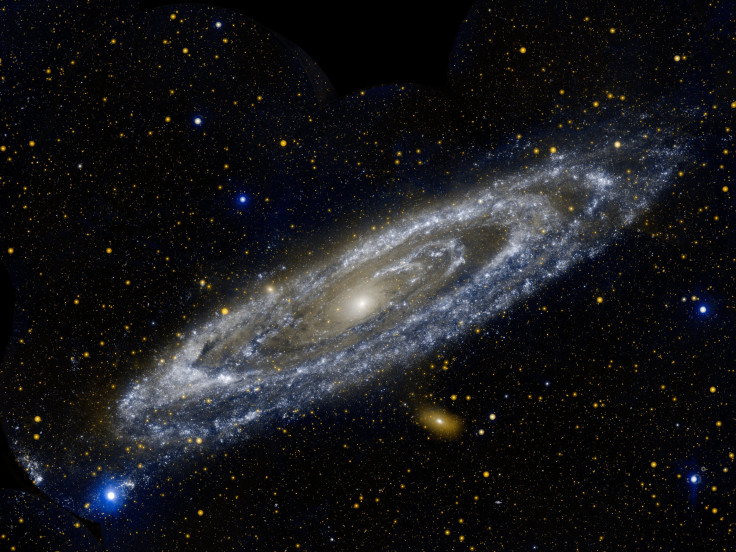Andromeda Not Much Bigger Than Milky Way: Size Matters When Galaxies Collide

Even if humanity were to somehow survive for millions of years (overcoming climate change, natural disasters, wars, extinction of other species and whatever else the future may throw at us), it would still be hard-pressed roughly five billion years from now, when the sun moves into the next phase of its life-cycle, turning into a red giant star that will engulf Earth.
If before that, we have gone the way science fiction has long fantasized (and Elon Musk has more recently proposed) and moved to other planets, safely out of the sun’s extended reach, it may still be somewhere within the confines of our home galaxy, the Milky Way. Or, maybe to our closest neighboring galaxy, Andromeda, which at present is about 2 million light-years away. But even if we did that, our survival beyond 5 billion years from today still looks pretty doubtful, because the two galaxies are also destined to collide around that time.
What will become of that collision? Scientists can’t say for sure, but it will most likely be a merger. Another possible scenario was that one of the galaxies — the larger one — would swallow the smaller one, but a new estimation of the Andromeda’s mass makes it unlikely.
Researchers from Australia, affiliated to the International Centre for Radio Astronomy Research (ICRAR), offered a new estimate for the mass of Andromeda, putting it at about a third of its previous estimate, and consequently in the same range as the mass of the Milky Way — about 800 billion solar masses. That is significantly smaller than the 2.5 trillion solar masses from the last estimate, and the new estimate was arrived at by using a new technique — by looking at the escape velocity of objects from within Andromeda.
“When a rocket is launched into space, it is thrown out with a speed of 11 kilometers (6.83 miles) per second to overcome the Earth’s gravitational pull. Our home galaxy, the Milky Way, is over a trillion times heavier than our tiny planet Earth so to escape its gravitational pull we have to launch with a speed of 550 kilometers per second. We used this technique to tie down the mass of Andromeda,” Prajwal Kafle, an astrophysicist from The University of Western Australia node of ICRAR and lead author of a paper that describes the new estimate, explained in a statement Wednesday.
The previous estimate was likely a result of overestimating the amount of dark matter in Andromeda. Kafle and other researchers previously used the escape velocity technique to downsize the mass of the Milky Way in 2014.
“By examining the orbits of high speed stars, we discovered that this galaxy has far less dark matter than previously thought, and only a third of that uncovered in previous observations,” Kafle said of Andromeda.
Andromeda and the Milky Way Collide! from ICRAR on Vimeo.
There are a number of smaller galaxies that are much closer to the Milky Way than Andromeda, but these are satellite galaxies that orbit our own, and at least two of them — the Large and Small Magellanic Clouds — will be subsumed within the Milky Way in the future.
The research paper with the new mass estimate for Andromeda appeared online in the journal Monthly Notices of the Royal Astronomical Society. Titled “The need for speed: escape velocity and dynamical mass measurements of the Andromeda galaxy,” the paper will appear in print Thursday.
© Copyright IBTimes 2025. All rights reserved.




















